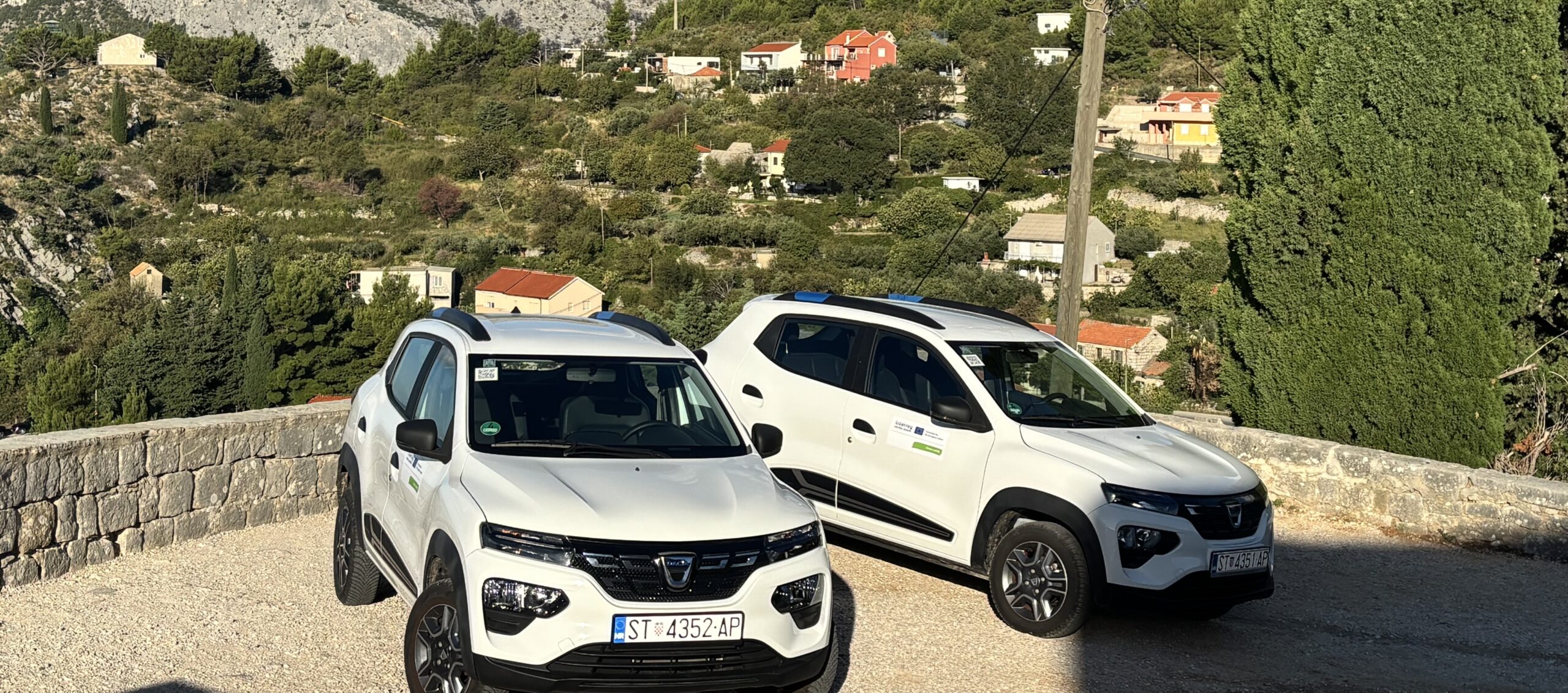A few weeks ago, the Adriatic city of Split became a crossroads of ideas for greener mobility. Partners of the Green LaMiS project met for their Mid-Term Review, hosted by EUPOLIS and the Municipality of Klis, with the participation of the Joint Secretariat.
The two-day hybrid meeting combined technical sessions, a study visit to Klis, and open dialogue among partners from Italy, Hungary, and Croatia. It marked the halfway point of the project’s journey to reshape the way social services are delivered in small and medium-sized cities — sustainably, efficiently, and with care.
From Assessment to Action
The Lead Partner, Fondazione Politecnico di Milano, presented an overview of the project’s strong progress. Two of three milestones have been achieved, including the completion of the Transnational Methodology, Carbon Footprint Tool, and Baseline Analysis.
The tool enables municipalities to calculate the carbon footprint of home-delivered social services using internationally recognized standards (the GHG Protocol). Simple yet powerful, it allows users to simulate different mobility scenarios and evaluate environmental performance.
Municipal partners have already applied it to assess their 2023–2024 emissions, confirming its usability, transferability, and real-world relevance.
Testing Green Solutions
With Work Package 2, theory is turning into practice. Each participating city has launched pilot actions — integrating electric vehicles into daily operations, training mobility managers, and collecting key performance data.
Procurement hurdles and market limitations for electric vehicles posed some delays, yet municipalities have shown impressive adaptability. In Klis, two electric cars branded with EU visibility logos are already in use by social service providers. In Szombathely, contracts for two vehicles have been finalized. Meanwhile, Bergamo is setting up a rental model to ensure flexibility and long-term sustainability.
Each pilot follows shared KPI frameworks to measure environmental, economic, and social impact — from CO₂ reduction to user satisfaction and cost-effectiveness.
A Living Laboratory
Beyond technical achievements, Green LaMiS is building a living laboratory of collaboration. The project’s strength lies in its participatory approach: researchers, local authorities, and social enterprises co-designing solutions that fit local realities.
The value of Green LaMiS is that it brings together people who care — about mobility, about social inclusion, and about the planet.
Looking Ahead
The next work package will focus on capacity building, ecosystem creation, and policy recommendations.
As the meeting closed, one message resonated: Green LaMiS is more than a project — it’s a movement.
Through innovative tools, real-world pilots, and authentic collaboration, it is proving that the “last mile” of social care can become a step toward a greener Europe.
